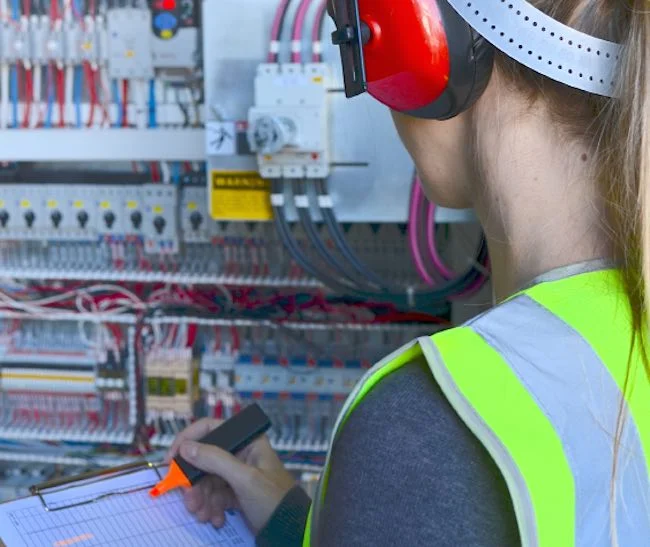With the proportion of clean energy gradually increasing, energy storage plays a crucial role in the power generation side, grid side and user side of the power system. The penetration rate of electrochemical energy storage is rapidly increasing due to the advantages of high energy density, flexible application and fast response.
According to CNESA data, by the end of 2021, the cumulative installed scale of global commissioned power energy storage projects will be 209.4GW, and the cumulative installed scale of new energy storage will be 25.4GW, with sodium-ion batteries dominating the market, with a market share of more than 90%, amounting to 23.1GW. China’s cumulative installed scale of commissioned power energy storage projects will be 46.1GW, accounting for 22% of the global market, and the cumulative installed scale of new energy storage will reach 5.73GW. The cumulative installed capacity of new energy storage projects has reached 5.73GW, and lithium-ion battery is the mainstream technology route for new energy storage, accounting for 89.7% of the total 5.14GW.
Battery as the core component of electrochemical energy storage, has a greater risk of thermal runaway, from a safety point of view, energy storage thermal management is very important. After professional calculations: 1GWh energy storage system to choose the air-cooled program investment cost of about 30 million yuan. Similarly, according to the cost of liquid cooling plate and other key components, the investment cost of 1GWh energy storage system with liquid cooling program is about 90 million yuan.
- Thermal management in electrochemical energy storage system
Thermal management is an important part of electrochemical energy storage system.
The electrochemical energy storage industry chain is divided into three parts: upstream equipment vendors, midstream integrators, and downstream applications.
Upstream equipment includes battery packs, energy storage converters (PCS), battery management systems (BMS), energy management systems (EMS), thermal management, and other equipment, etc.; the core of the midstream link is system integration + EPC; and the downstream is mainly divided into three scenarios: power supply side, grid side, and user side.
Most of the enterprises in the energy storage industry chain are involved in 1-2 segments, and a few of them are involved in the whole process from battery to system integration and even EPC.
During the period of 2011-2021, a total of 32 fire and explosion accidents occurred in energy storage power stations around the world, and from January to May 2022, more than 10 energy storage fire accidents have occurred around the world. The rapid development of battery energy storage stations in China, due to the battery, PCS quality problems or system integrators construction of good and bad, battery energy storage fire hazards are more serious, fire accidents are frequent.
On April 16, 2021, a fire and explosion occurred in Beijing Guoxuan Fowes energy storage station, after investigation, the cause of the fire was an internal short circuit in the LFP battery, which triggered the thermal runaway of the battery to catch fire. In July of the same year, the “Victoria Big Battery” project in Australia, which is equipped with Tesla’s Megapack energy storage system, caught fire in the battery compartment due to a leakage in the cooling system during the testing process.
Battery thermal runaway has become the main cause of fire accidents. Battery thermal runaway refers to a short time when a large amount of heat is generated in the battery due to an internal short circuit or an external short circuit, which triggers a reaction and decomposition of the positive and negative active substances and the electrolyte, generating a large amount of heat and flammable gases, leading to a battery fire or explosion.
Frequent fire incidents highlight the fact that thermal management has become an indispensable and important component to ensure the safe operation of energy storage power plants.
- Technical route
At present, the more mature thermal management of energy storage technology route for the air-cooled and liquid-cooled, of which air-cooled in the current energy storage system accounts for the mainstream, liquid-cooled program in the future penetration rate is expected to continue to rise.
Power station energy storage system using the air-cooled program, has an operating life of 15 years, while the choice of the liquid-cooled program can extend the service life of the power station to 20 years.
Thermal management has become the core of the energy storage system, and air-cooled and liquid-cooled is currently a mature technology route. Energy storage thermal management cooling methods mainly have the following three major technology routes: air cooling (air cooling), liquid cooling, and phase change cooling, in addition to heat pipe cooling.
Comparison of the three major thermal management technology routes
Air cooling technology
At present, air-cooling technology is mainly used in container energy storage systems and communication base station energy storage systems with low power density. On the one hand, because the air-cooled system structure is simple, safe, reliable and easy to realize; on the other hand, because the energy storage system is not as harsh as the power battery system on the energy density and space limitations, can be increased by increasing the number of batteries to obtain a lower work rate and heat production rate.
Containerized lithium battery energy storage system, for example, consists of a standard container, lithium-ion battery system, battery management system, energy storage converter, air-conditioning and air ducts, distribution cabinets, and sevoflurane fire extinguishing device.
Containerized energy storage power station air-cooling system
The air-cooled thermal management system has air-conditioning structures including floor-standing one-piece, roof-standing one-piece, split-type and other configurations. Floor-mounted integrated air-conditioners are used in energy storage containers with reserved air-conditioning space. Usually, air is discharged from the top and connected to the air ducts inside the container, so that air is directly and precisely supplied to the battery packs.
If there is no space for an air conditioner inside the storage container, a roof-mounted integrated air conditioner is used. The air conditioner is mounted on top of the container and cools the batteries from the top.
Split air-conditioners are installed in the battery pack, with front return air and back air supply, and the air outlet is connected to the air duct to directly cool the battery.
Liquid Cooling Technology
The liquid cooling program uses water, ethanol, silicone oil, and other coolants to dissipate heat by indirect contact with the battery cells through the uniformly distributed conduction grooves on the liquid cooling plate. Its advantages include: 1) close to the heat source, high-efficiency cooling; 2) compared with the same capacity of the container air-cooled solution, the liquid cooling system does not require the design of air ducts, the footprint savings of more than 50%, more suitable for the future of more than 100MW-class large-scale energy storage power station; 3) compared with the air-cooled system, due to a reduction in the use of mechanical parts such as fans, the failure rate is much lower; 4) the liquid cooling noise is low, to save the system of self-consumption of electricity, environmentally friendly! The liquid-cooled system is also environmentally friendly.
Liquid cooling technology: higher cooling efficiency
The liquid cooling program has significant advantages in ensuring the safety of the energy storage system and heat dissipation efficiency. The liquid cooling solution adopts water, ethanol, silicone oil and other coolants to dissipate heat indirectly by contacting with the electric core through the uniformly distributed conduction grooves on the liquid cooling plate. Its advantages include: 1) close to the heat source, high-efficiency cooling; 2) compared with the air-cooled solution for the same capacity container, the liquid cooling system does not need to design air ducts, which saves more than 50% of the floor space, and is more suitable for future large-scale energy storage power stations of more than 100 MW; 3) compared with the air-cooled system, due to the reduction in the use of mechanical parts such as fans, the failure rate is lower; 4) the noise of the liquid cooling is low, which saves the system’s self-consumption of electricity, and is environmentally friendly. The core of the liquid cooling system is the chilled water.
The core of the liquid cooling system is the chiller and the liquid cooling plate. The chiller includes a compressor, condenser, throttle, evaporator, and water pump, etc., and the chiller manufacturers include Invic, Tongfei, etc.; the liquid cooling plate is the upstream copper and aluminum and other raw materials are processed into the corresponding plate, and the production process of the liquid cooling plate is divided into brazing, blowing and expanding, die-casting, stamping, stirring and friction welding, etc., and the manufacturers of the liquid cooling plate include Silver Wheel, Sanko, Fei Rongda, and Kexin.
In the future, with the new energy power station, off-grid energy storage, such as larger battery capacity, higher system power density of the energy storage power plant needs to start, energy storage system energy density and heat generation is greater, the security and life requirements are higher, will promote the industry more to turn to the use of the liquid-cooled program.
Phase Change Cooling
Phase change cooling is a cooling method that utilizes phase-change materials to absorb heat.
The biggest influence on the cooling effect of the battery is the selection of phase change materials. When the specific heat capacity of the selected phase change materials is larger and the heat transfer coefficient is higher, the cooling effect under the same conditions will be better, and vice versa, the cooling effect will be worse.
Phase change cooling has the advantages of compact structure, low contact thermal resistance, good cooling effect, etc. However, the phase change material itself does not have the ability to dissipate heat, and the absorbed heat needs to be exported by liquid cooling system, air cooling system, etc. Otherwise, the phase change material can not continuously absorb heat. In addition, phase change materials take up space and are costly.
Phase change cooling structure
- Market space
According to the estimation of CITIC Securities, it is expected that the market space in 2025 will be 12.3-23.7 billion yuan.
Taking 1MWh containerized energy storage system as an example, this kind of small-scale low energy density energy storage system generally adopts air cooling technology. According to the calculation, in the typical working condition 1C operation, the system heat production rate is 39kW, the minimum cooling power of air conditioning required is 24kW. take some kind of outdoor air conditioning on the market as an example, the cooling capacity is 1500W, the price is 2000 yuan/unit, and the cost of refrigeration is calculated to be about 1.33 yuan/W. If the above containerized energy storage system is satisfied, it will correspond to the need of about 30,000 yuan, and it can be further concluded that the single GWh energy storage system The investment cost of choosing air-cooled program is about 30 million yuan. Similarly, according to the cost of key components such as liquid-cooled plate, the investment cost of single GWh energy storage system choosing liquid-cooled program is about 90 million yuan.
Calculation results show that, under conservative assumptions, the global electrochemical energy storage thermal management market space will reach 1.7/30/52/82/12.3 billion yuan in 2021-2025, corresponding to a CAGR of +65%. Among them, the Chinese market will reach 2/5/8/15/27 billion yuan respectively, corresponding to CAGR+85%.
Under the neutral assumption, if the global electrochemical energy storage capacity demand reaches 315GWh in 2025, the corresponding energy storage thermal management market space will be $16.6 billion, corresponding to a CAGR of 78% from 2021 to 2025.
Under optimistic assumptions, if the global electrochemical energy storage capacity demand reaches 450GWh in 2025, the energy storage thermal management market space is $23.7 billion, with a CAGR of 95% from 2021-2025.
Electrochemical energy storage thermal management market space measurement (conservative assumption)
- Participating Companies
Companies currently participating in the energy storage thermal management market include those producing industrial temperature control equipment such as air conditioners and liquid cooling panels. Companies with earlier layout and technology accumulation may have more advantages.
Automotive air conditioner thermal managers cut into the energy storage field, such as Songzhi, Aoteka, Sanhua Intelligent Control, Yinlun, Feirongda (battery liquid cooling plate), and Innovative Energy.
Liquid cooling method will become the mainstream trend of thermal management of energy storage system. In liquid-cooled battery cooling system, the coolant needs to be forced to circulate through the pump. Electronic water pump sales will be accompanied by energy storage battery shipments synchronized with high growth. Related companies Flying Dragon shares electronic water pump market share ranked first. Zhejiang Leili.
Energy storage thermal management participants according to the source of the technology route is divided into two categories:
Air-cooled technology companies: most of the former air conditioning-related companies, including precision temperature control, such as Invicta, Shenling Environment, Longjin Technology, Jia Litu. CITIC Securities will be listed in the Songzhi shares of the air-cooled technology route is complete bullshit.
Liquid cooling technology companies: industrial cooling related, such as the same as the fly shares, Songzhi shares, Gao Lan shares, black shield shares (839800), which Ningde Times and Vision Energy is Songzhi shares of energy storage thermal management customers, 2022-07-08, Songzhi shares secretary reply: the company’s thermal management system products for the battery is mainly used liquid cooling technology, is currently mainly used in the field of new energy vehicles and energy storage power station. The thermal management of energy storage was awarded a certificate of accreditation by TÜV Rheinland.
The company’s battery thermal management system has been certified by TÜV Rheinland.





